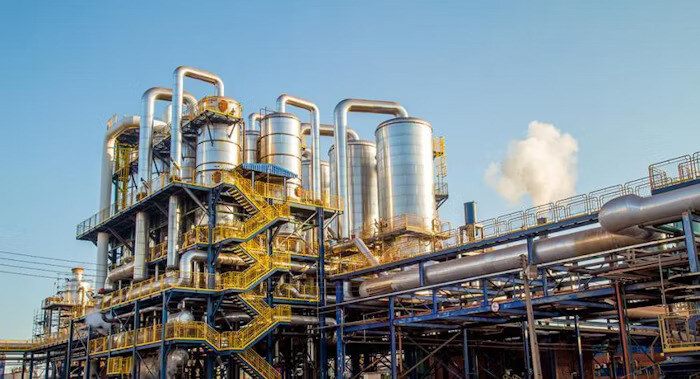
5 Consequences of Reactive Maintenance Strategies
Relying exclusively on reactive maintenance practices can lead to many unintended consequences, like shortened asset life, reduced safety and high ...
Solutions
Workplace Management Solutions
Real Estate Management Solutions
Maintenance Management Solutions
Energy Management Solutions
Engineering Document Management Solutions
Asset Management Solutions
Automate campus scheduling for classes, meetings, and exams with our EMS software.
Plan and manage conferences effortlessly with EMS software to impress guests and streamline operations.
Boost workplace flexibility and maximize space use with seamless desk and room booking.
Organize workplace or campus events smoothly, creating memorable experiences.
Optimize workspace, manage allocations efficiently, and reduce costs with our space management solutions.
Deliver projects on time and within budget by improving communication, collaboration, and efficiency with our software.
Streamline lease accounting for ASC 842, IFRS, and GASB compliance.
Manage leases efficiently by tracking key dates, analyzing costs, and ensuring compliance.
Centralize data and analytics for better insights, faster negotiations, and revenue growth.
Centralize facility and asset maintenance, automate work orders, and ensure compliance with our CMMS software.
Extend asset life, reduce downtime, and prevent costly repairs with data-driven monitoring.
Prevent equipment failures and extend asset life by detecting and addressing issues early.
Make sustainable, cost-efficient energy decisions by monitoring and optimizing power consumption.
Remotely monitor and control equipment with real-time data to predict issues, boost efficiency, and reduce downtime.
Easily share and collaborate on documents, creating a single source of truth for engineers and contractors.
Manage and analyze assets across their lifecycle to schedule maintenance, reduce downtime, and extend lifespan.
Improve visibility, automate work orders, and ensure compliance for efficient facility and asset management.
Resources
Browse our full library of resources all in one place, including webinars, whitepapers, podcast episodes, and more.
Support
Looking for access to technical support, best practices, helpful videos, or training tools? You’ve come to the right place.
About Accruent
Get the latest information on Accruent, our solutions, events, and the company at large.

In the chemical industry, billions of dollars can be lost annually due to unplanned downtime. Here's how to utilize a CMMS to decrease downtime for good.
In the manufacturing industry alone, over $50 billion is lost annually due to unplanned downtime.
According to the Aberdeen Group's Asset Performance Management: Blazing a Better Path to Operational Excellence. The chemical industry represents a major segment of manufacturing and contributes significantly to this downtime loss number.
As a relatively mature industry, many chemical companies utilize advanced operating processes and have adopted a computerized maintenance management system (CMMS) and other technologies that combat unplanned downtime when used properly.
The answer is complex, but can be partly understood by examining the comprehensive effects of downtime in the chemical industry, which are:
By looking at each of these in more detail, it becomes easier to understand the major interruption that an unplanned downtime event causes in a chemical plant.
When a major piece of equipment breaks in a chemical plant, at best it slows production and at worst it can cause a partial or even a complete shutdown. Depending on the type of process, a shutdown may be isolated to a particular unit or production line.
If the plant is continuous, however, and a common area such as distillation or utilities goes down, the entire plant may go offline. For batch processes, there may be an alternative reactor, or other ways to reduce the impact, but it still presents less than ideal production conditions since it goes against plan.
For plants that are operating at capacity, the slightest wobble in production can put them behind schedule, with few alternatives for making up the ground.
In many chemical plants, stopping and then restarting processes can mean a certain amount of off-quality production.
Take a High-Density Polyethylene (HDPE) plant as an example. When the plant is restarted, it can take anywhere from hours to days to produce quality product that meets all requirements to be considered right-first-time material. This transitional product in some cases is scrap. In other situations, it can be sold as off-quality, but at less than premium product.
The delta between what premium and off-spec product sell for is part of the financial loss directly resulting from unplanned downtime.
Negating production losses, the maintenance and repair costs themselves are also a major contributor to the high financial impact of downtime. Labor, parts, tool rental, etc., are all elements of maintenance repair costs. When an equipment outage is planned, these costs exist, but can be managed. When unplanned downtime events occur, there can be extra costs.
For example, if a pump impeller breaks and there is not a spare in inventory, it will likely be necessary to expedite the part. This rushed delivery can be costly. The larger and more custom a piece of equipment, the higher these costs can be.
Labor costs also tend to rise in unplanned situations. The repair may require paying overtime or involve securing contract labor with little notice, which once again can increase costs. Another labor consideration is that maintenance resources are often diverted from other maintenance tasks that are important as well. Depending on the situation, these delays in other work can create operational issues.
The final area where unplanned downtime can have a high-impact is customer satisfaction. While some of the other cost areas listed above are more obvious, this one is just as important.
The global chemical industry is competitive, and customers have high expectations for on-time, quality delivery of products. Most chemical company customers have commitments to their own clients that require them to meet schedule and delivery expectations. When a chemical company fails to deliver on schedule, this can prompt dissatisfied customers to go to competitors. The long-term financial impact of losing a customer can be huge.
Not every unplanned downtime event will lead to missed production schedules or the loss of customers, but the risk is always there, and it is a costly proposition when it does occur.
The battle to reduce unplanned downtime is one which chemical companies cannot afford to lose. Measuring and reporting maintenance performance creates awareness and is a critical first step. Strong preventive maintenance programs are another key strategy that leading chemical companies use to decrease equipment downtime.
Technologies like a CMMS are foundational to driving these programs and moving chemical companies from reactive to proactive maintenance, lowering the costs associated with these unplanned downtime events.
Learn some key steps to solve the unplanned downtime challenge. Ready to get started? Schedule a demo today!
Relying exclusively on reactive maintenance practices can lead to many unintended consequences, like shortened asset life, reduced safety and high ...
Identify the role of planned downtime and how it creates challenges for manufacturing maintenance organizations and explore how to minimize those ...
Explore effective facility management tips for the beverage industry with Accruent. Learn to reduce asset downtime and enhance operational efficiency.
Subscribe to stay up to date with our latest news, resources and best practices